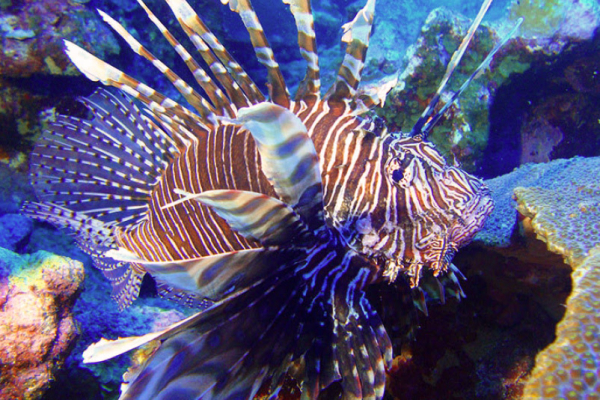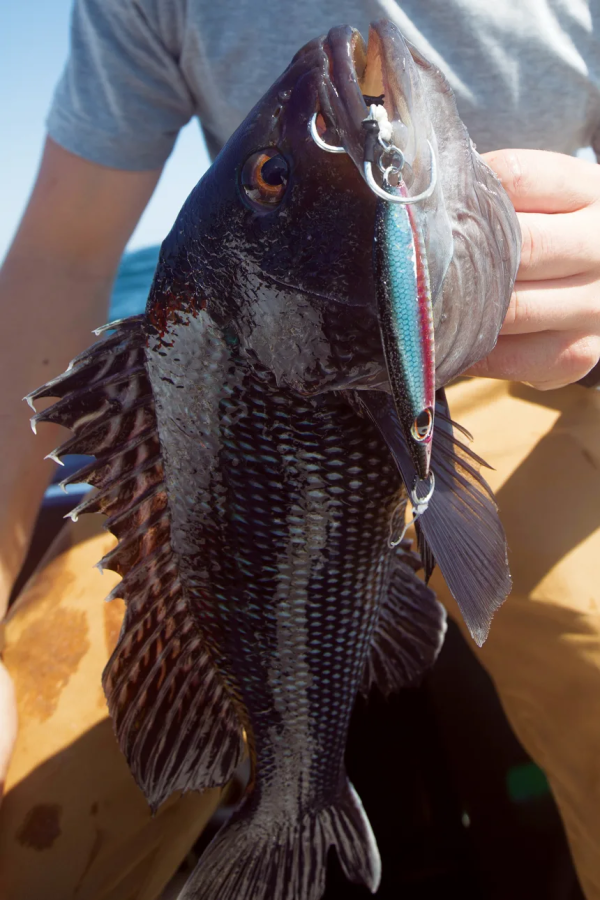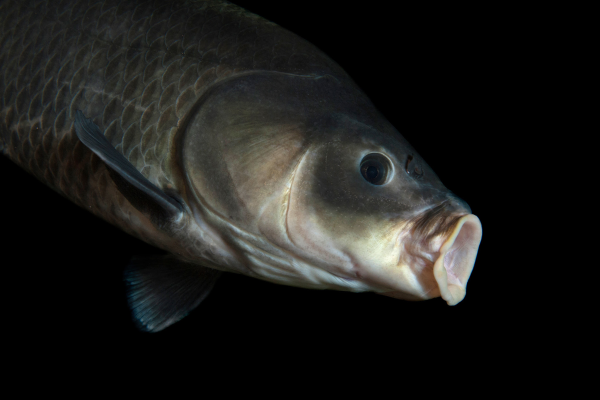June 2015 Russell Bass
with Carter McNeil
June is finally here
and its time for vacations and fishing. If you want to catch a lot of spotted
bass on a beautiful lake with a natural shoreline and clear water, head to Lake
Russell. And keep some of the small spotted bass for a fish fry!
Russell is a Corps of
Engineers lake on the Savannah River between Hartwell and Clarks Hill. Shoreline development is restricted, so it is
one of our prettiest lakes. And it doesn’t
get as crowded with pleasure boaters as most of our lakes.
The lake has a lot of
good rocky points and humps that spots love. And the channels are marked by
poles where they drop off so it is easy to find them and fish. Brushpiles have
been put out on many of them and there is standing timber all over the lake,
giving bass ideal habitat.
Spots were illegally
introduced into Russell not long after it was filled and they have overcrowded
the lake, as happens all too often on lakes where they are not native. They are fun to catch and eat but they tend
to harm the largemouth population and fill the lake with “rats,” spots around
12 inches long. Since there is no size limit on them you can keep ten a day to
eat and actually help the lake.
Carter McNeil lives near
in Russell in Abbyvile South Carolina and fishes with the Abbyville Panthers
High School team. He also fishes many pot and open tournaments on Russell and
other area lakes. His Grandfather Danny
Whaley and uncle Trad Whaley brought him up fishing and taught him a lot about
bass and he fished his first tournament when only ten years old.
Their training has paid
off. Carter is going to Bethel College this year on a fishing scholarship and
will be on their fishing team. And he had an incredible honor this year when he
BASS named him to their High School All American Bass Team, one of only 12
fishermen nationwide to get that recognition.
In their press release
on the All American Team, BASS says about Carter: “He and his partner won the
B.A.S.S. Nation High School Southern Divisional on the Pee Dee River in April
and took third place in the 2015 Costa Bassmaster High School Classic
Exhibition. McNeil is the founder and president of his fishing team and a
frequent volunteer for Corps of Engineers projects aimed at planting aquatic
vegetation on South Carolina’s Lake Russell.”
Carter likes fishing
Russell and does well in tournaments there.
In June he says the bass will be set up on their summer holes, points
and humps out from spawning creeks, and can be caught on a variety of
baits.
“Shallow water that
drops off fast into deep water is key this time of year,” Carter said. Any hump or point that falls into the channel
will hold fish, and the key depth to catch them is eight to 15 feet deep. So he
wants his boat to be in at least 20 feet of water when casting to water eight
feet deep.
A variety of baits to
cover those key depths is fairly simple. A Norman’s Deep Little N, a drop shot
worm, a shaky head and a Pulse Jig all work well and are really all you need
for a good day of fishing. You will
catch a lot of bass on those baits but for bigger fish he will have a big worm
like a Zoom Old Monster Texas rigged to flip standing timber.
The following ten spots
are good right now and give you an example of the kinds of places you want to fish
in June.
1. N 34 08.284 – W 82 41.570 – Go up the
Savannah River to Channel Markers 43 and
45 and stop about one third of the way across the river out from them. There is a hump that comes up right by the
channel and tops out about ten feet deep. There is some brush piles on the hump and
standing timber around it. You will be
at the tip of a triangle with the two channel markers on the bank as the base.
When you find the hump
stop off the river side of it with your boat in 30 feet of water and cast to
the top in about ten feet. Carter starts
with a Deep Little N in a baitfish color like sexy shad or glimmer blue, with
some chartreuse in it. Cast past the top
of the hump so the bait is hitting bottom on top in ten feed and fish it back
to the boat. Carter got a keeper spot on the crankbait here the day we fished.
Carter reels his
crankbait fairly fast and sweeps his rod every few feet to make the bait dart
forward. He says fish will often follow the bait and when it speeds up will eat
it. Fan cast all over the hump from the
river side with a crankbait, then fish a jig head worm, drop shot and Pulse Jig
around it, too.
2. N 34 08.039 – W 82 41.513 – Go in toward the
small creek with the big island in the mouth of it just downstream of channel marker
43. Behind and downstream of that channel marker a ditch comes off the bank in
the mouth of the spawning creek that is behind the island and bass move to it
in June. Stop in about 20 feet of water
and cast to the top of the flat along the ditch.
This is the kind of
“feeding table,” a flat area that drops into deep water that Carter
concentrates on in June. Fish your
crankbait over the top of the flat and ditch edge then try your other baits. Remember that bass seem to feed best in eight
to 15 feet of water so work that depth hard.
Carter keeps a Robo
morning dawn worm on a drop shot rig ready to drop down to fish he sees on his
depthfinder. He likes a fairly heavy
lead to get to the bottom fast and stay there as he gently twitches his rod tip
to make the worm jiggle in place. His leader is about a foot long.
3. N 34 07.677 – W 82 40.182 – Across the river
and a little downstream a fairly big creek enters the lake between channel
markers 42 and 44. In the mouth of the
creek, not far off the upstream point of it, you will see four shoal
markers. Out from the downstream point
of the creek there is a hump that is good.
It is way off the red clay small bluff bank on the point.
This hump tops out
about 15 feet deep and an old road bed crosses the deep side of it. Sit out on the river side in 30 feet of water
and cast across it. Carter will switch to a DD 22N on deeper places like this
so he can bump the bottom.
The bottom here is
hard, a key since Carter says bass like hard bottoms. Fish along this long hump downstream. It will
drop off some on a more narrow area then come back up on the end of that
section of it. Fish that area where it
comes back up shallower before leaving.
4. N 34 07.163 – W 82 40.277 – Back across the
river and downstream channel marker 35 sits on the upstream side of a point
where the channel hits it. On the back side the point drops off fast and there
are some brush piles here and on almost all the other places, too.
Stop in at least 20
feet of water on the back side of the marker and cast your crankbait and jig
head up on it. Rocks here hold mostly spots and we got a couple of small ones
when we fished it. Work from the end of the point toward the bank a short
distance, keeping most of your cast in the area around the pole.
Current moving across
this point in both directions, from generating power and pumpback at the dam,
make this and other places much better.
Baitfish move across the shallow water with the current and the bass
wait on them to feed as they pass.
5. N 34 06.090 – W 82 39.937 – Downstream on the
same side Indian Creek enters the lake between channel markers 29 and 31. There is a small island on the downstream
side and underwater timber signs warn that the creek is full of standing trees.
You can see many of them sticking a little out of the water.
In tournaments or other
times when bigger bass are the goal Carter will go to timber like this and flip
it with a big worm. He rigs a big worm
or lizard Texas style behind a one quarter ounce sinker for a slow fall and
flips it to the trees, letting it fall on the shady side of the trunk. The
bigger the wood the better. Fish will
hold on these trees at different depths at different times of the day and the
higher the sun the deeper they go.
Carter will work
through the trees, targeting the bigger ones, going into the creek. He lets his
worm fall watching his line for a tick or if the worm stops falling before hit
should. That is the time to set the
hook! He seldom lets his worm go all the
way to the bottom, expecting the fish to be suspended in the tree.
6. N 34 05.817 – W 82 39.543 – Further
downstream on the same side of the river there is a big double cove between
channel markers 27 and 29. The middle point of this cove is a good feeding flat
table and it drops off into deeper water on the downstream side. Carter says
many fishermen ride past places like this a little off the main points so they
don’t get fished as hard as the spots marked by poles.
Stay on the downstream
side of the middle point out in 20 plus feet of water and cast up on the point
to eight to ten feet of water with all your baits. When fishing a Pulse Jig Carter puts a white
or translucent Fluke on a half-ounce head and counts it down to the depth fish
are holding. He then reels it back with a steady retrieve, keeping it at that
depth.
The Pulse Jig is a wobble
head jig and is a more subtle bait than the crankbait, but you can fish it
faster than a jig head or drop shot.
Keep it near the bottom and don’t set the hook when you feel a hit. Just
keep reeling until your rod loads up then sweep it to bury the hook.
7. N 34 04.238 – W 82 39.332 – In the mouth of
Beaverdam Creek, just upstream of Elbert Park, usually called the Highway 72
ramp, the first big cove on the left going upstream has three islands in the
mouth of it. The downstream one has a shoal marker on a point running off it
toward the channel.
This big long point has
some rocks on it and fish feed on it.
Stay out in about 20 feet of water and cast up on the top of the point
to about eight feet and work your baits back.
Stay on the river side of the point.
“Wind is your
aggravating friend,” Carter said. Some
wind blowing across these spots helps like the current does, making baitfish
move across them. It makes boat control
and positioning more difficult but can help the fishing as long as it is not
too strong to allow you to fish. We
caught a couple of small spots here, too, so fish were on it in mid-May.
8. N 34 04.909 – W 82 40.477 – Going into
Beaverdam Creek channel marker 8 sits on a hump off the bank and there is a
shoal marker between it and the point.
Carter says this is one of the biggest community holes on the lake and
there is a race to it in tournaments since it holds so many fish.
The water drops off on
the downstream side of the channel marker and forms a ledge going toward the
bank. Stay on the downstream side in deep water and cast up on the hump around
the channel marker then work all the way to the point. There is a big flat that
is an excellent feeding area and fish hold all over the edge of the drop so
fish it carefully.
9. N 34 04.880 – W 82 41.725 – Further up
Beaverdam Creek channel marker 9 sits on the creek side of a small island. It marks a point coming off the island and
dropping into the channel. Carter says
it is a real good rocky point and has some brush on it, too.
Stop on the downstream
side near the island and fish that side of the point out to and past the
channel marker. This is the deeper side
and holds the most fish so Carter works it rather than the flatter upstream side.
Fish all your
baits. With the shaky head Carter slides
it along the bottom until he hits brush or rocks, then stops it and shakes it a
little before moving it more. He uses a quarter ounce homemade head and likes a
Zoom red bug Trick worm on it.
10. N 34 05.260 – W 82 42.390 – Going upstream
Beaverdam Creek makes a fairly sharp bend around an island on the left side. On
the right just off a point channel marker 18 shows where a good flat drops off
into the channel. The channel swings in
right by it making it even better.
Stay out in deep water
and cast along the shallow flat that runs parallel to the channel around the
marker. Here and other places keep a watch on your depthfinder for fish holding
out in the deeper water. Carter got a spot here by dropping his drop shot worm
down to fish he saw holding well off the flat.
Check out these places,
fish them the way Carter suggests and try his bait. Once you get the pattern down you can find
many similar places all over the lake and catch fish from them.




